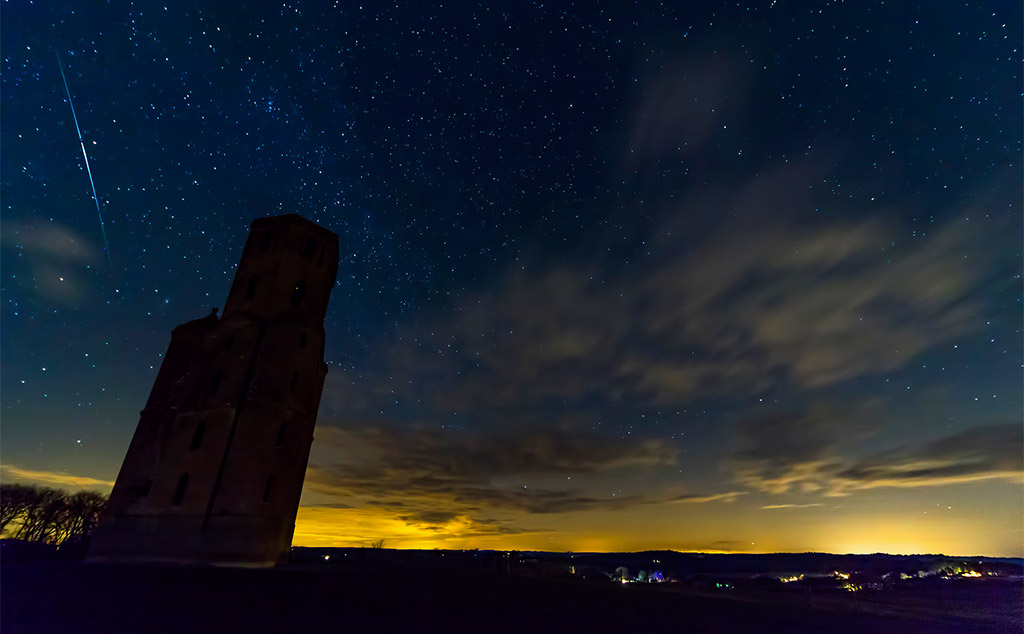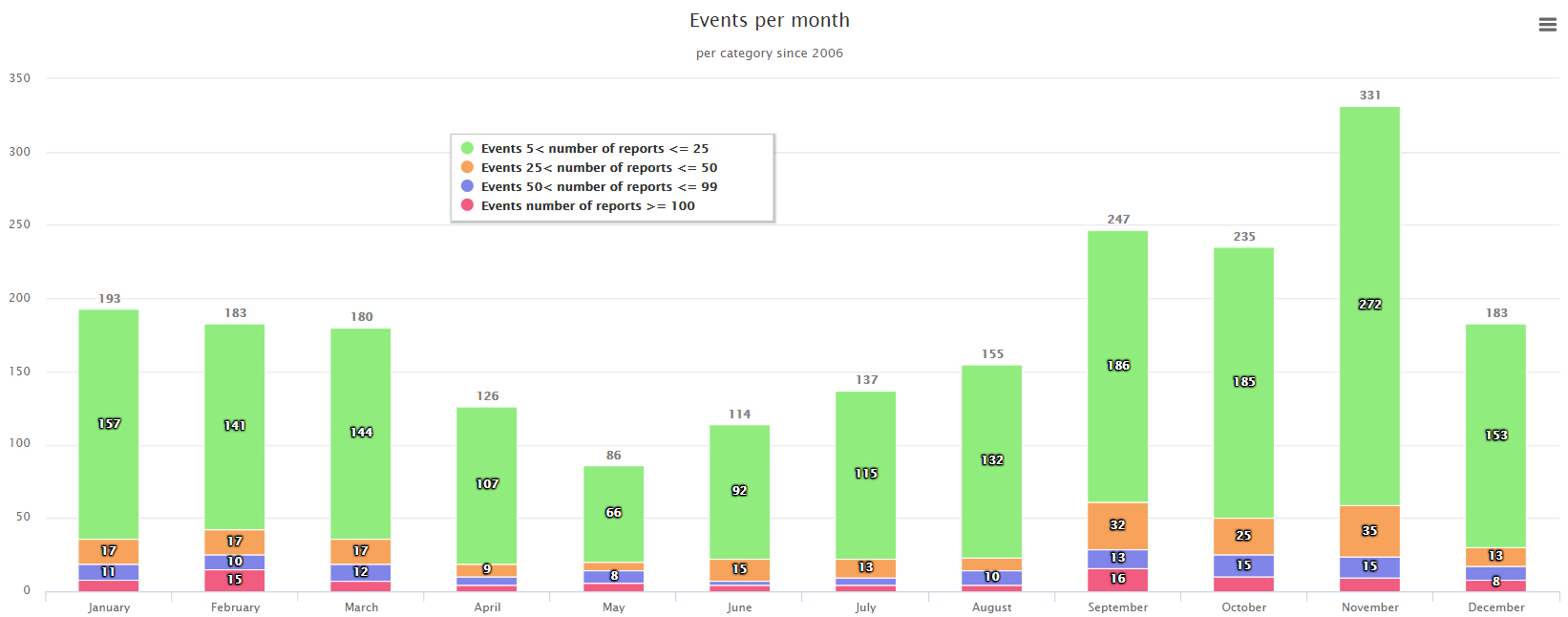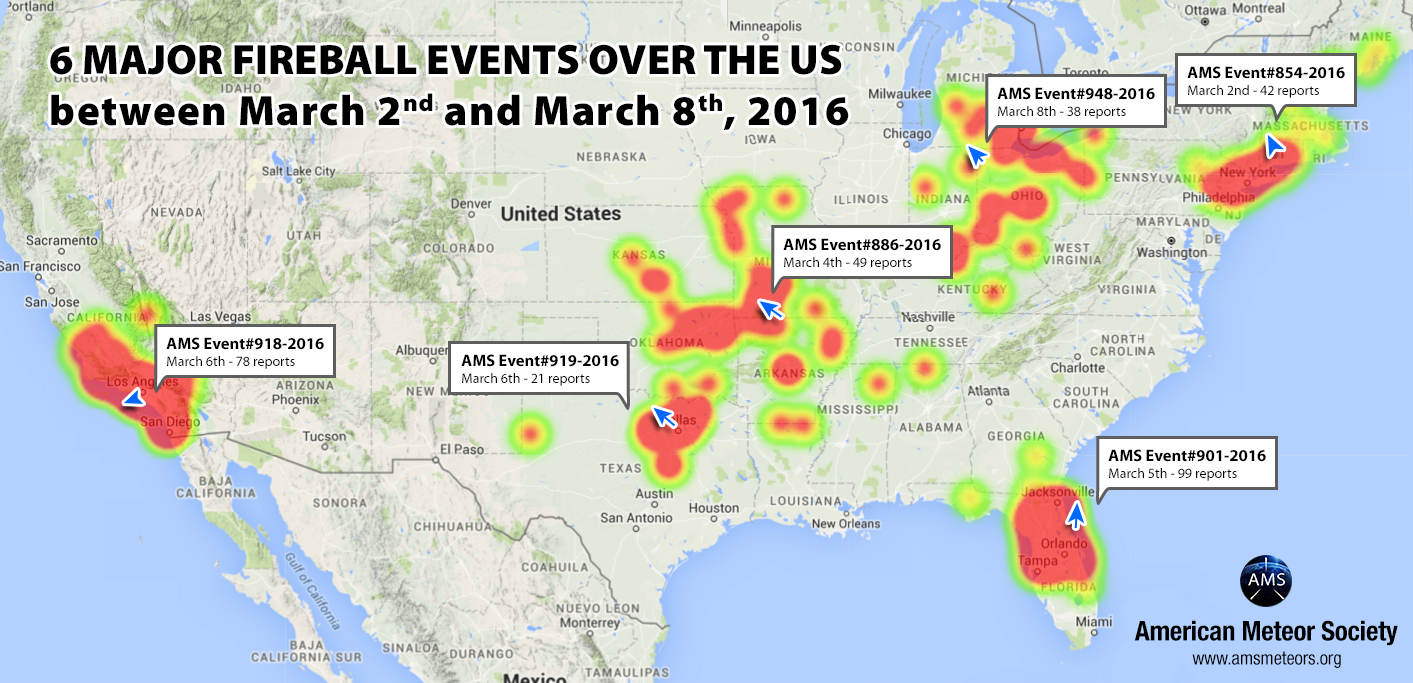
While March is the least active month for shower meteor activity (no major annual showers are active this month), Northern spring is a good time to see fireballs. In the weeks around the start of spring, NASA noticed that the appearance rate of fireballs can increase by as much as 30 percent.

Why does this happen? AMS Treasurer and Journal Editor Robert Lundsford said:
… there is not much to look forward to this month [March] except for the evening fireballs that seem to peak this time of year from the northern hemisphere. This could be due to the fact the Antapex radiant lies highest above the horizon this time of year during the evening hours.
The antapex is the point away from which the solar system is moving and toward which the stars appear to be converging in the sky. The antapex radiant lies hightest in the sky during the period from mid-February through mid-April as seen from the northern hemisphere. The antapex is one of the four radiants caused by the Earth’s movement through space. The others are the apex, helion, and anthelion. Antapex meteors are all slow compared to the other sources due to the fact that they orbit in the same direction and have to catch up to the Earth.
NASA has no hypothesis on this fact and only notes that “more space debris litters this section of Earth’s orbit”
2016 seems to good year for fireballs. Since January 1st, 2016, the American Meteor Society has received more than 910 fireball reports through its online Fireball Report program. In comparison, only 839 have been received in 2015 during the same period (-8.5% compared to 2016). The 2016 reports have been linked to 49 fireball events with more than 10 reports, 25 events with more than 25 reports and 10 events with more than 50 reports (8 of these events have more than 100 reports).
Between March 2nd and March 8th only, the AMS recorded 6 major fireball events over the US only:

The witness location and estimated trajectory of these events can be seen here:
Keep watching the sky and enjoy the show!
 American Meteor Society
American Meteor Society
Hi Vincent,
I am sure you are aware of NASA’s web page http://neo.jpl.nasa.gov/fireballs/. I downloaded the last ~10 year’s worth of reports into Excel, made a histogram and found no significant peak in February:
Month Frequency
1 28
2 28
3 23
4 22
5 25
6 20
7 24
8 19
9 25
10 29
11 26
12 23
Is this due to the AMS receiving more reports than NASA?
Thanks,
Mark
Mark and All,
Vincent is busy with other matters so I will step in and answer your question. The NASA data is collected by automated cameras that operate all night long. While we do receive fireball reports from people operating video cameras, a great majority (>99%) of our reports are from eyewitnesses. People are naturally out and about more during the evening hours therefore we receive most of our reports prior to midnight. Sorry, I cannot give you an exact figure but I would estimate that it is greater than 90%. Therefore our fireball rates reflect those seen during the evening hours which show a distinct peak in February. The theory behind this is thought to be associated with the antapex radiant, which lies 90 degrees east of the sun and is best situated for viewing from the northern hemisphere during the late winter and early spring months. This is not a radiant associated with a particular comet. Rather it is created by the Earth’s motion through space encountering debris of long-period comets during the pre-perihelion portion of their orbit. If we had more observers located in the southern hemisphere a similar peak should be found during their late winter and early spring (August-October).
I hope this answers your question!
Sincerely,
Robert Lunsford
I found a ‘rock’ in a field several years ago on the farm and how can I find out if it’s a meteorite?
Suzanne,
I suggest that you visit the “Meteorites” section of the Association of Lunar and Planetary Observers at: http://alpo-astronomy.org/
There is a lot of good information there about identifying potential meteorites.
about 2005-6 I was on my way to Louisburg Ks and was turning north onto metcal rd when I spotted a slow moving fireball heading north parallel to metcalf rd.I pulled into my home at the time 25645 metcalf rd louisburg ks and when I got out I could clearly see and hear this fireball it was moving so slow I thought it was a small plane on fire,it went about 1/2 block past my house and the next thing it just went poof like a paper bag popping,I could hear the debris hitting a metal roof of a nearby house and outbuilding.I could never get permission from the owners to explore the land to find any proof.It was like in April or May when it happened,it was so cool hearing it and seeing the smoke and fire and I was shocked when it just went poof,nothing came back toward our house it blew out northward.Any chance of anyone else reporting this? we never heard anything on the news about it.But it was amazing I only wish I had a camera at the time.